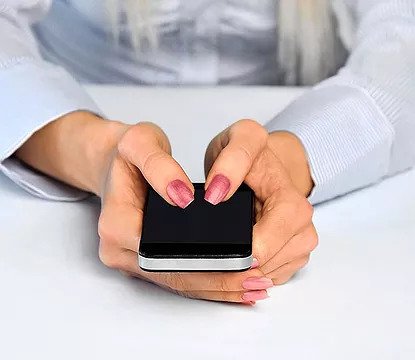But this condition has nothing to do with your mouth, it’s a painful condition of the hand and wrist caused by inflammation of the tendons on the thumb.
Back in the day it used to be called washerwoman’s thumb or mother’s wrist, while it still affects women more commonly than men, especially those looking after infants and small children, it is now commonly referred to as “texter’s thumb” in reference to repeated overuse of the thumb during texting on mobile devices.

What causes de Quervain’s tenosynovitis?
De Quervain’s was first diagnosed by Dr Fritz de Quervain in Switzerland.
The pain from de Quervain’s is caused by inflammation of the tendons that control thumb movements and the sheath that surrounds them. Inside the sheath is a layer of fluid (synovial fluid) that helps the tendons to guide freely during movement. When the area becomes inflamed the fluid becomes thickened and doesn’t facilitate the gliding action, making movement painful and restricted.
overuse of the thumbs during texting and typing
What are the signs and symptoms?
People with de Quervain’s tenosynovitis usually have the following types of symptoms:
- Pain and tenderness near the base of the thumb extending up the side of the wrist
- Swelling in the same area
- Pain increases with use of the thumb
- Inability or difficulty to grip objects eg opening a jar, picking up children, holding a hammer
- Pain may come on suddenly or gradually build up over time
Who is at risk?
De Quervain’s tenosynovitis is more common in:
- Females, especially those caring for infants and small children. This is due to the lingering effects of the hormones that relax the ligaments and tendons to enable child birth and increased lifting with the thumb spread away from the fingers;
- People aged 30-50 years;
- People who engage in activities that overuse the thumb such as frequent texting and typing especially on mobile devices;
- Occupations that require repetitive wrist and hand movements such as computer based occupations, musicians and trade labourers; and
- Those with medical conditions such as diabetes, alcoholism, cirrhosis of the liver and seizure disorders.

How do I know if I have de Quervain’s?
Diagnosis can be confirmed by a Doctor or Physiotherapist in their clinic. Usually unless the condition is quite severe or the onset was associated with a traumatic injury no scans are required.
How is it treated?
In most cases de Quervain’s can be treated conservatively by a Physiotherapist or hand therapist. Treatment will depend on the severity of symptoms but will most likely include:
- Anti-inflammatory treatment including the application of ice and the recommendation to speak to your Doctor or a Pharmacist about the use of over the counter non-steroidal anti-inflammatory medications such as ibruprofen
- Rest from aggravating activities, or immobilisation of the thumb in a splint where this is not possible eg. Caring for children or continuing work activities
- Exercises to improve strength and mobility of the thumb and surrounding areas
In some more extreme cases people with de Quervain’s may require injections of corticosteroids into the affected tendons and tendon sheath to relieve inflammation and reduce pain.
If conservative treatment fails and symptoms persist for six-months or longer, you may be referred to a specialist hand surgeon to determine if surgery on the tendons is required.
If you think you may have de Quervain’s tenosynovistis or another hand or wrist condition you should consult with you health professional for advice
